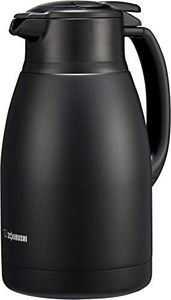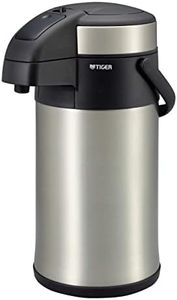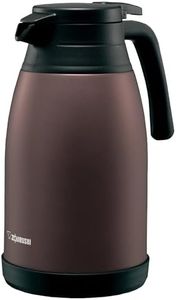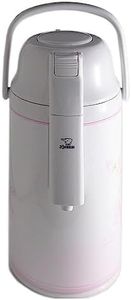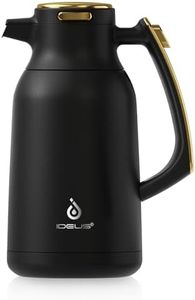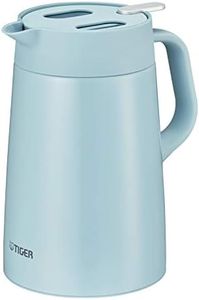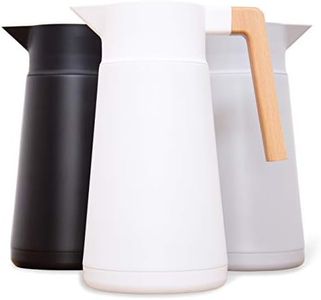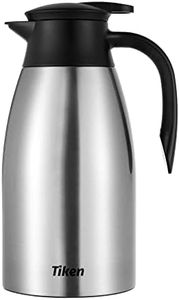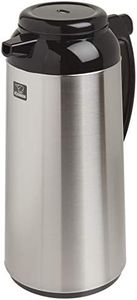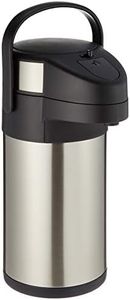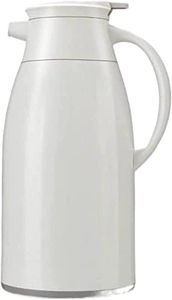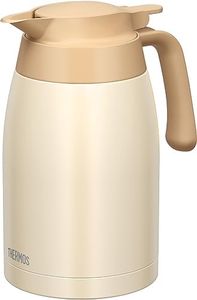We Use CookiesWe use cookies to enhance the security, performance,
functionality and for analytical and promotional activities. By continuing to browse this site you
are agreeing to our privacy policy
10 Best Thermal Carafes
From leading brands and best sellers available on the web.Buying Guide for the Best Thermal Carafes
When choosing a thermal carafe, your main goal is to keep beverages hot (or cold) for a long period without using external heat or refrigeration. Thermal carafes are a great choice for serving coffee, tea, or any drink that benefits from temperature retention at gatherings, in offices, or for home use. To find the right fit, think about how and where you’ll use it—will you need to serve multiple people, keep drinks hot for hours, or perhaps carry it while traveling? The key features below will help you make a thoughtful and informed decision.CapacityCapacity refers to how much liquid the carafe can hold, usually measured in liters or ounces. This is important because it determines how many people you can serve before needing a refill. Smaller carafes (up to 0.5 liters) are better for individual use or small servings, medium sizes (0.5–1 liter) are suitable for a couple of people, while larger carafes (over 1 liter) are more suited to groups, meetings, or events. Choose the capacity that matches how much coffee or tea you plan to keep warm and how many people you usually serve; overfilling or underutilizing a carafe can impact temperature retention and convenience.
Insulation TypeThe insulation type describes how the carafe is built to keep your beverage hot or cold. Most thermal carafes use either vacuum insulation (a double-wall design with a vacuum between the walls) or foam insulation. Vacuum insulation typically offers better temperature retention and is more effective for longer periods; foam insulation may suffice for short-term needs but isn’t as efficient. If you need your drink to stay hot or cold for several hours, look for vacuum insulation, while foam-insulated models can work for brief events or quick serving.
Material (Interior and Exterior)Carafes are commonly made from stainless steel, glass, or plastic, each affecting durability and insulation. Stainless steel is durable, doesn’t break easily, and offers excellent heat retention, making it a popular choice for both interior and exterior. Glass-lined interiors can preserve flavor better but are more fragile. Plastic shells are lightweight but not as robust for sustaining temperature. If you prioritize durability and need to transport the carafe, stainless steel is a good pick, while glass-lined interiors suit those who value taste and use the item in a safer, stationary environment.
Pouring MechanismThe pouring mechanism refers to how you dispense the beverage—this could be a push-button, lever, spout lid, or twist-and-pour system. Some are more spill-proof and user-friendly than others. For easy, one-handed use or serving multiple people, look for push-button or lever systems. If you are mostly pouring for yourself, a simple twist-and-pour or flip-top may suffice. Consider how easy it is to pour, how well it prevents leaks, and how comfortable it is based on who will be using it.
Ease of CleaningEase of cleaning is how simple it is to keep the carafe hygienic and stain-free. Some models have wide openings or removable lids/internals that make washing easier, while others can only be rinsed. If you tend to leave drinks in the carafe for extended periods or add milk/sugar, easy cleaning becomes even more important to avoid odors or build-up. Choose a model that allows you to reach inside for thorough cleaning if maintenance is a top concern.


